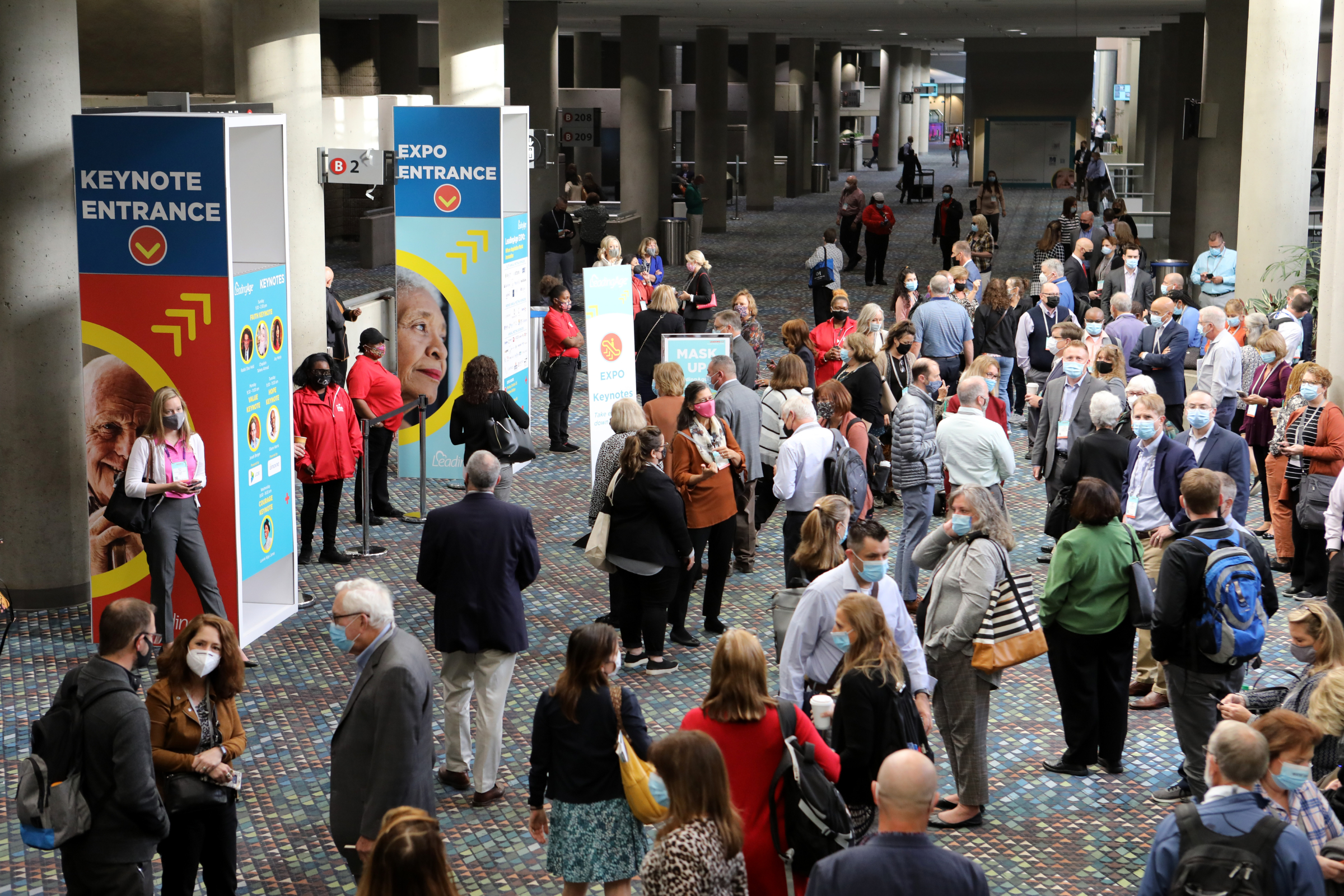HOSPICE Act passes House
On Monday February 10th, Congressman Jimmy Panetta (D-CA) and Congressman Tom Reed (R-NY) introduced the Helping Our Senior Population in Comfort Environments Act or HOSPICE Act (H.R. 5821) and this bill passed out of the House on December 8th, 2020. The HOSPICE Act was developed in response to the July 2019 Office of Inspector General (OIG) reports that identified several concerns in the hospice program related to the survey process and quality of care. LeadingAge and our partners VNAA/ElevatingHOME worked in coalition with other hospice stakeholders to formulate joint recommendations for the Congressional staff that worked on the legislation, many of which impacted the final version of this bill.The HOSPICE Act will make several changes to the hospice survey process as well as introducing intermediate remedies into the hospice program. Broadly speaking, the bill addresses hospice survey transparency, consistency, and frequency, education of both consumers and surveyors, and the authorization of new remedies. This article highlights some key elements of the legislation as well as where we are with the process in the Senate.
Current Status
We sent a letter to the Ways and Means Committee in advance of the February markup supporting aspects of the bill and as well as emphasizing the pieces of the bill that we cannot support. These pieces were not changed before passage out of the House though our objections were acknowledged. We continue to advocate to the Senate on two key aspects of the legislation: the blanket increase of survey frequency from 3 years to 2 years and the inclusion of civil money penalties as a remedy for hospice. There has never been a recommendation from the OIG that hospice survey frequency occur every two years. Additionally, the requirement for every 3 year surveys has only been in place for one cycle of routine surveys so there has not been sufficient time to see how the IMPACT Act requirements changed the landscape. Given the introduction of other remedies, we are advocating that CMPs should not be introduced before CMS has the chance to utilize and evalute the effectiveness of the other new tools that would be authorized by this legislation. We also question the effectiveness of CMPs at achieving goals of improving care.
Critically, the Senate version of this bill, the Hospice Care Improvement Act, included a provision that targeted surveys to poor performers and new hospices rather than the blanket approach taken by the House. The Senate bill also did not include CMPs. We continue to advocate to the Senate that they should change these two pieces of the House-passed legislation prior to passage. We do anticipate that this bill is being considered as part of lame duck package so will provide updates shortly on the results of our advocacy
Summary of the HOSPICE Act Key Provisions
Transparency
The OIG made the following recommendations related to public transparency of survey and certification information: (1) CMS should expand information reported by accrediting organizations (AOs) to make it more comparable to the data reported by State agencies; (2) CMS should seek statutory authority to make information from AOs publicly available (on Hospice Compare or a similar resource) and, once authority is obtained, make them publicly available; and (3) CMS should include (on Hospice Compare or a similar resource) survey reports or a compilation of important survey findings from State agencies and make the information more readily available and accessible in a user-friendly way.
The HOSPICE Act follows through on all these recommendations. Critically for members is that the bill does instruct that AOs submit the same information as State and local surveyors so that the information that is displayed to consumers is comparable across entities. The Secretary is instructed that the data that is posted prominent for consumers is easily accessible, and understandable. There is also a provision in the legislation instructing the Secretary to create programs to measure and reduce inconsistency of surveys.
Survey Frequency
The HOSPICE Act makes routine hospice surveys permanent and effective 10/2021 would increase the frequency of routne surveys to no less than once every 24 months. We do not support this blanket approach where survey frequency is increased for all hospice providers. We recommended that the legislation require more frequent surveys for new hospice providers and for those providers who are found to have serious deficiencies; for everyone else, the frequency should stay at 3 years..
Training
We worked to add a provision on surveyor training to the legislation that mandates the development of a comprehensive surveyor training program, minimum requirements for the survey team, and that the training must be completed prior to being allowed to participate on a hospice surveying team.
Special Focus Program
HHS is instructed to develop a special focus program for enforcement of requirements for those hospices that have substantially failed to meet program requirements and surveys shall be conducted not less than once every 6 months for hospices in the special focus program. We emphasized the portions of the special focus program that do not work well in the nursing home program and will continue to advocate to CMS regarding implementation of this requirement in a way that is effective for targeting problem providers.
Remedies
The OIG recommendation was to seek statutory authority to establish additional, intermediate remedies for poor hospice performance. The HOSPICE Act establishes this authority and instructs the Secretary to develop procedures for and implement a range of remedies in the hospice program along with appropriate procedures for appeals. One of the specific remedies named in the bill is civil monetary penalties (CMPs). LeadingAge and VNAA opposed and will continue to oppose the additional of CMPs to the hospice program.
Quality Reporting
The bill increases the penalty for failure to meet HQRP requirements beginning with FY2023 payment year (from 2% to 4%). LeadingAge and VNAA expressed reservations about this approach.
GAO Report
We also advocated for the inclusion of a report on the impact of the intermediate remedies which will be conducted by the Government Accountability Office (GAO) three years after the implementation of the remedies. The report will look at the frequency of application of each type of remedy and the impact of the remedies on access to and quality of hospice care. We asked the Senate as part of their current deliberations to be explicit that this GAO report include an evaluation of the impact of survey frequency and to consider any increased frequency for all hospice providers based on the data from this future GAO report.

Most Recommended
October 15, 2025
 Shutdown Week Three: Impact of Ongoing Closure on Affordable Housing
Shutdown Week Three: Impact of Ongoing Closure on Affordable Housing
December 10, 2025
Fiscal Year (FY) Funding 2026
October 07, 2025
Immigrant Workforce Matching Program Brings Workforce Relief
Recently Added
January 07, 2026
Nominate a Growing Leader for the 2026 LeadingAge Leadership Award
January 07, 2026
 Colleagues on the Move, January 7, 2026
Colleagues on the Move, January 7, 2026
December 29, 2025
 RHT Program Awards: All 50 States To Receive Funds, Says CMS
RHT Program Awards: All 50 States To Receive Funds, Says CMS
December 29, 2025



